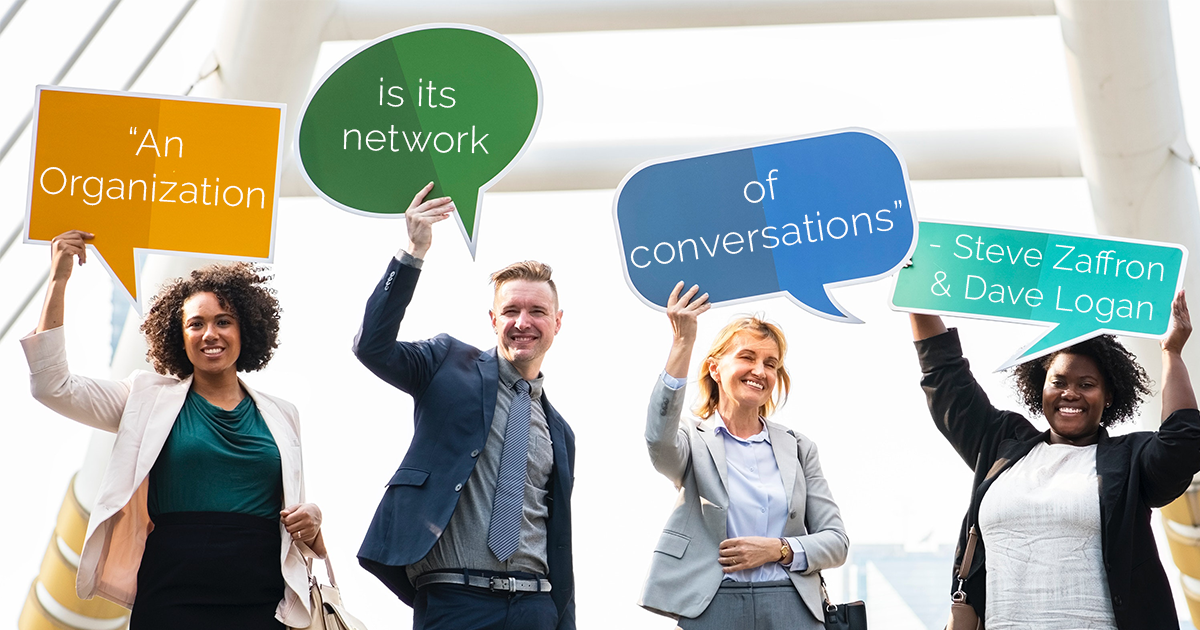Conversations, aka meetings, are the sine qua non of organizations and communities. They are how things get done. “Is there anything that matters that isn’t done through conversations?” asks Steve Zaffron and Dave Logan, authors of The Three Laws of Performance.
Planning, problem solving, policy setting, coaching or staying up-to-date with colleagues: all of these occur through conversations. In addition, meeting conversations feed into other ones. Managers develop a recommendation for a board of directors. The board deliberates the recommendation and sends it back to the managers, who then talk about how to implement the board’s decision. Neighborhood conversations here and there influence public hearings.
What is the conversational environment of the meetings in your organization or community? Combative? Collaborative? Focused on blaming people for situations or figuring out what kinds of situations you want to create? Are conversations conspiring and punitive or inspiring and uplifting?
As leaders and participants—with leaders having the lion’s share of influence—we co-create the environments for conversations everyday, hour by hour, and in this way co-create our organizations. The environment of any meeting or conversation reflects an organization’s or community’s environment.
Are you creating an environment that is life-giving to you, your colleagues, and customers or clients? Does the interaction mostly focus on the past and present or on the future you want to create?
WHAT people talk about creates the future of an organization or community. Talking primarily about the past or present results in a future that repeats the past. Talking about a desired future produces a new one, more likely to match people’s hopes and dreams and able to respond to an ever-changing world.
HOW people talk implicitly engenders an environment that influences whether people focus on the past and present or the future. An environment is restricted when people are afraid to be authentic, disagree, or question one another, especially the boss. This keeps people’s attention on the past and present as they try to protect themselves, their team or group. Conversely, when people are encouraged to speak their mind and heart, openly disagree when they do, and ask questions, the environment is open and people are more able to envision a future for themselves, the organization and the community.
Years ago, two organizations with which I worked were emblematic of restrictive environments. One was an automobile manufacturing company in the Midwest where blame and combat characterized the environment. When I first consulted there the effectiveness and efficiency of its processes, along with its performance in the market place, reflected its restricted and negative environment. The other was a hospital in the same region where the distinctive features of its environment were extreme politeness and deference to senior executives.
Either extreme imprisons people into the past and present, and restricts creativity and performance.
How would you describe the current environment of the network of conversations in your organization? Guarded? Protectionist? Dull or depressing? Or, is it open, engaging, animated and enlivening? Maybe it is somewhere in between.
Observe meetings over the next few days and note what people are talking about and how they are talking. What does this say about your organization or community and its ability to create a desired future?

